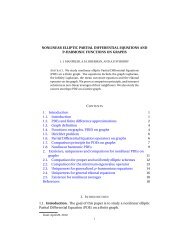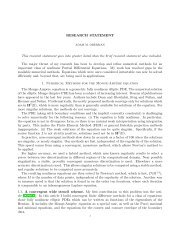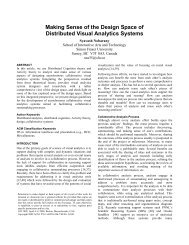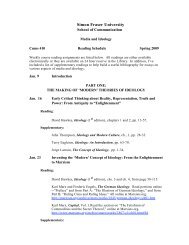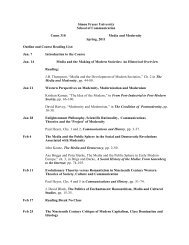Boyd Convex Optimization book - SFU Wiki
Boyd Convex Optimization book - SFU Wiki
Boyd Convex Optimization book - SFU Wiki
Create successful ePaper yourself
Turn your PDF publications into a flip-book with our unique Google optimized e-Paper software.
326 6 Approximation and fitting<br />
consider real-valued functions; the ideas are readily extended to handle vectorvalued<br />
functions as well.<br />
6.5.1 Function families<br />
We consider a family of functions f 1 , . . . , f n : R k → R, with common domain<br />
dom f i = D. With each x ∈ R n we associate the function f : R k → R given by<br />
f(u) = x 1 f 1 (u) + · · · + x n f n (u) (6.17)<br />
with dom f = D. The family {f 1 , . . . , f n } is sometimes called the set of basis<br />
functions (for the fitting problem) even when the functions are not independent.<br />
The vector x ∈ R n , which parametrizes the subspace of functions, is our optimization<br />
variable, and is sometimes called the coefficient vector. The basis functions<br />
generate a subspace F of functions on D.<br />
In many applications the basis functions are specially chosen, using prior knowledge<br />
or experience, in order to reasonably model functions of interest with the<br />
finite-dimensional subspace of functions. In other cases, more generic function<br />
families are used. We describe a few of these below.<br />
Polynomials<br />
One common subspace of functions on R consists of polynomials of degree less<br />
than n. The simplest basis consists of the powers, i.e., f i (t) = t i−1 , i = 1, . . . , n.<br />
In many applications, the same subspace is described using a different basis, for<br />
example, a set of polynomials f 1 , . . . , f n , of degree less than n, that are orthonormal<br />
with respect to some positive function (or measure) φ : R n → R + , i.e.,<br />
∫<br />
{<br />
1 i = j<br />
f i (t)f j (t)φ(t) dt =<br />
0 i ≠ j.<br />
Another common basis for polynomials is the Lagrange basis f 1 , . . . , f n associated<br />
with distinct points t 1 , . . . , t n , which satisfy<br />
{<br />
1 i = j<br />
f i (t j ) =<br />
0 i ≠ j.<br />
We can also consider polynomials on R k , with a maximum total degree, or a<br />
maximum degree for each variable.<br />
As a related example, we have trigonometric polynomials of degree less than n,<br />
with basis<br />
sin kt, k = 1, . . . , n − 1, cos kt, k = 0, . . . , n − 1.<br />
Piecewise-linear functions<br />
We start with a triangularization of the domain D, which means the following. We<br />
have a set of mesh or grid points g 1 , . . . , g n ∈ R k , and a partition of D into a set<br />
of simplexes:<br />
D = S 1 ∪ · · · ∪ S n , int(S i ∩ S j ) = ∅ for i ≠ j.



